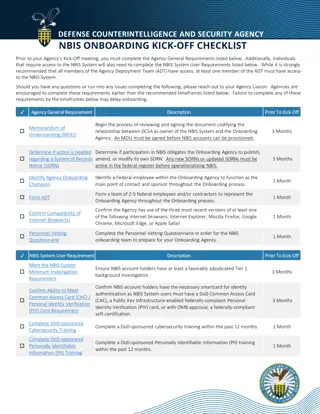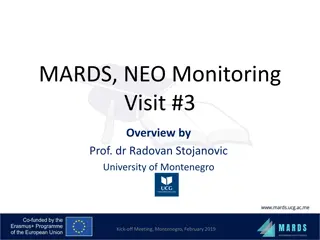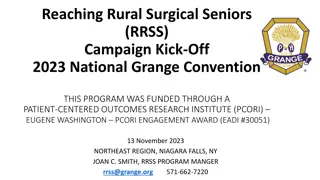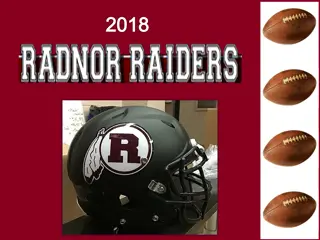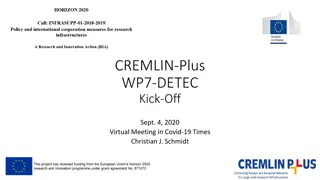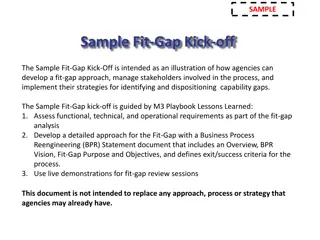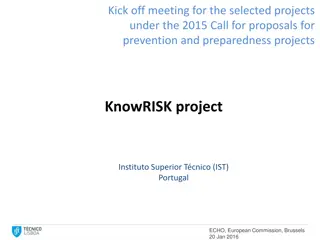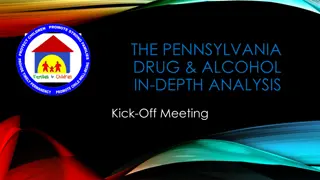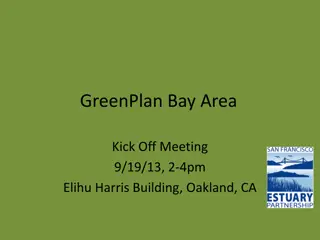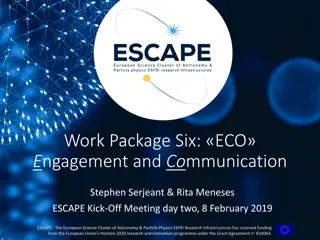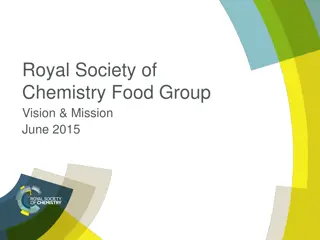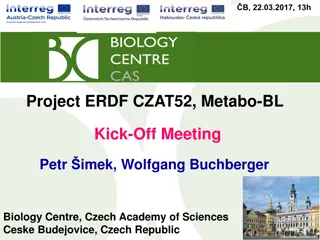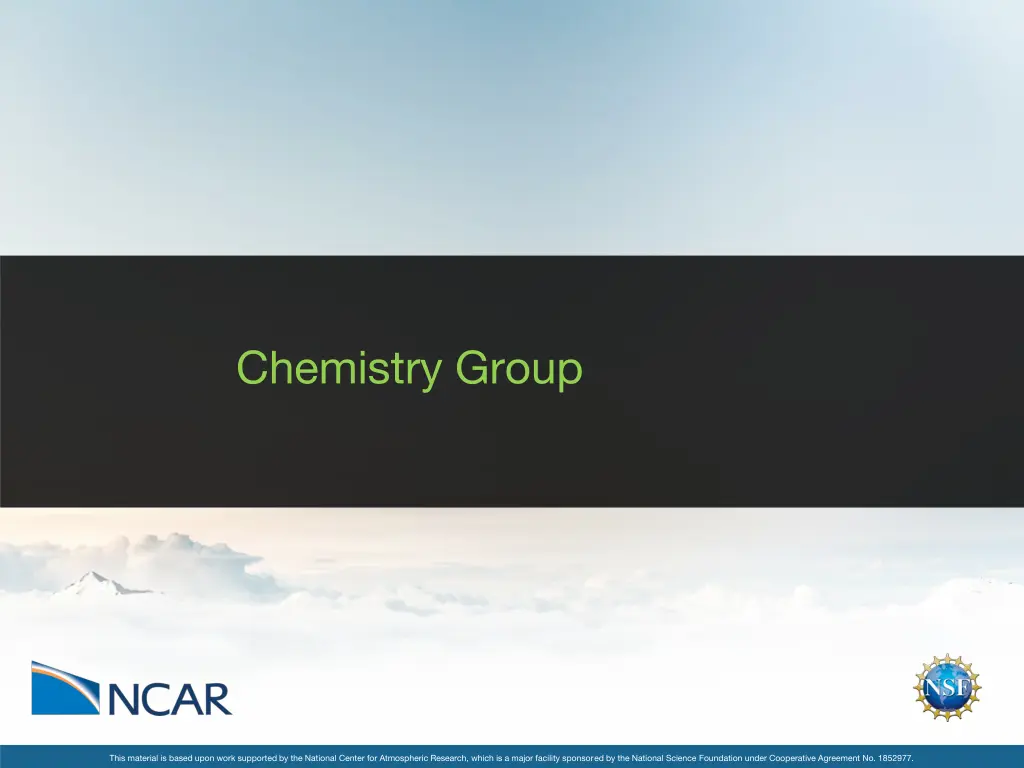
Chemistry Group: MUSICA Development Plan Insights and Challenges
Explore the evolution of working groups for MUSICA, scale dependencies, major obstacles in the development plan, and new science possibilities in atmospheric chemistry. Dive into the complexities of computational expense, uncertainty in coupling, and mechanisms with emissions. Discover the need for strategic partnerships and deliverables for enhanced research outcomes.
Uploaded on | 0 Views
Download Presentation

Please find below an Image/Link to download the presentation.
The content on the website is provided AS IS for your information and personal use only. It may not be sold, licensed, or shared on other websites without obtaining consent from the author. If you encounter any issues during the download, it is possible that the publisher has removed the file from their server.
You are allowed to download the files provided on this website for personal or commercial use, subject to the condition that they are used lawfully. All files are the property of their respective owners.
The content on the website is provided AS IS for your information and personal use only. It may not be sold, licensed, or shared on other websites without obtaining consent from the author.
E N D
Presentation Transcript
Chemistry Group This material is based upon work supported by the National Center for Atmospheric Research, which is a major facility sponsored by the National Science Foundation under Cooperative Agreement No. 1852977.
Questions posed to the Breakout Groups: 1. Which working group(s) for MUSICA do you see evolving from your topics? 2. What are the scale-dependencies of your topic considering the range of applications from urban air quality to upper atmospheric research and timescales from days to centuries? 3. What are or could be the major obstacles to the proposed development plan for MUSICA? 4. Does the proposed realization of MUSICA address your research needs? 5. What new science can be addressed with the new modeling infrastructure? 6. What next major development steps for MUSICA are necessary to consider the processes in your topic? 7. What type of diagnostics should be part of the output? 8. Are there dependencies between your and other working groups to be considered? 9. What multi-lateral Strategic Partnerships should be established and what specific Deliverables will they include? Please assign a rapporteur to report the group s response to the above points. Atmospheric Chemistry Observations and Modeling Laboratory
Which working group(s) for MUSICA do you see evolving from the topic? Answer: Chemical mechanisms (transformations) -- not limited to any part of the atmosphere. This should include/connect to: 1. Solvers 2. Emissions (processing/lumping) 3. Photolysis 4. Traceability 5. Interroperability (how does a change in a reaction cascade down to the mechanisms) 6. Condensed phase and multiphase (esp. clouds)
What are the scale-dependencies considering the range of applications from urban air quality to upper atmospheric research and timescales from days to centuries? Answer: All scales are potentially in scope, but the main scale-dependencies arise around plumes and the non-linear aspect of chemistry in plumes. Scale-dependencies linked to emissions. Scope of the application (i.e. in time paleo vs forecasting) puts different requirements on mechanisms. There are assumptions about equilibrium that need to be assessed as scales change.
What are or could be the major obstacles to the proposed development plan for MUSICA? Answer: Computational expense (need a clear understanding on what is acceptable from stakeholder/user) inc. memory usage. Coupling uncertainty in? How do we propagate this and how to incorporate this into chemical data (i.e storage of the uncertainty or set of kinetic parameters for reactions)? Connection of mechanisms with emissions (especially through lumped surrogates). Do we just need a common protocol? How do we do that if there are different scopes of mechanisms (O3 vs SOA)? Potential for large number of mechanisms and obfuscating the science (which scheme was used?) leads to proposal for supporting a limited set of mechanisms. We should have benchmarked standard schemes with associated standard emissions and underlying protocols on how to make new emissions.
Does the proposed realisation of MUSICA address your research needs? Answer: Could do, especially in terms of propagating and quantifying uncertainty and reducing it. This would be a major benefit of interchangeability across the system. Guiding question from EPA perspective: How do we make sure that the mechanisms we use standup in court?
What new science can be addressed with the new modeling infrastructure? Answer: Complexity can be explored more easily (spatial and chemical). Huge impact on community to enable sharing of mechanistic data and protocols for development -- mechanism metrology
What next major development steps for MUSICA are necessary to consider the processes in your topic? Answer: A new framework for how we represent chemical species, and the contracts (couplinhg) between chemistry and the other modules that interact and depend on the outputs of chemistry Standard formats this would be a huge win for the whole community (reactions, etc although barrier to do this in particular with heterogenous rxns)
What type of diagnostics should be part of the output? Answer: Flexible way for user to extract diagnostics (tendencies, time sampling, spatial sampling, statistics (i.e. MDA8H, 1hr max, 1hr min) Connection of diagnostics to observations (i.e. time-step data interpolated on aircraft track, ground site, satellite + application of AVG kernel etc). Tagging/attribution of emissions/sources to concentrations (i.e. TOAST) Costs/performance of sub-routines
Are there dependencies between your and other working groups to be considered? Answer: Emissions Aerosols and clouds Model evaluation Architecture and numerics (timings but much much more) Transport/sub-grid scale
What multi-lateral Strategic Partnerships should be established and what specific Deliverables will they include? Answer: Mechanism reduction could enable SP with lab communities, SAR developers, QM etc. This would help deliver world-class mechanisms/mechanistic data. Engagement with low end users user experience/making it very easy to use. This would enable a huge user base. Connection to observational communities (NASA, NSF); deliver new observations to evaluate Forecasting for campaigns Links to other modelling centers; deliver new mechanisms/alternative mechanisms

